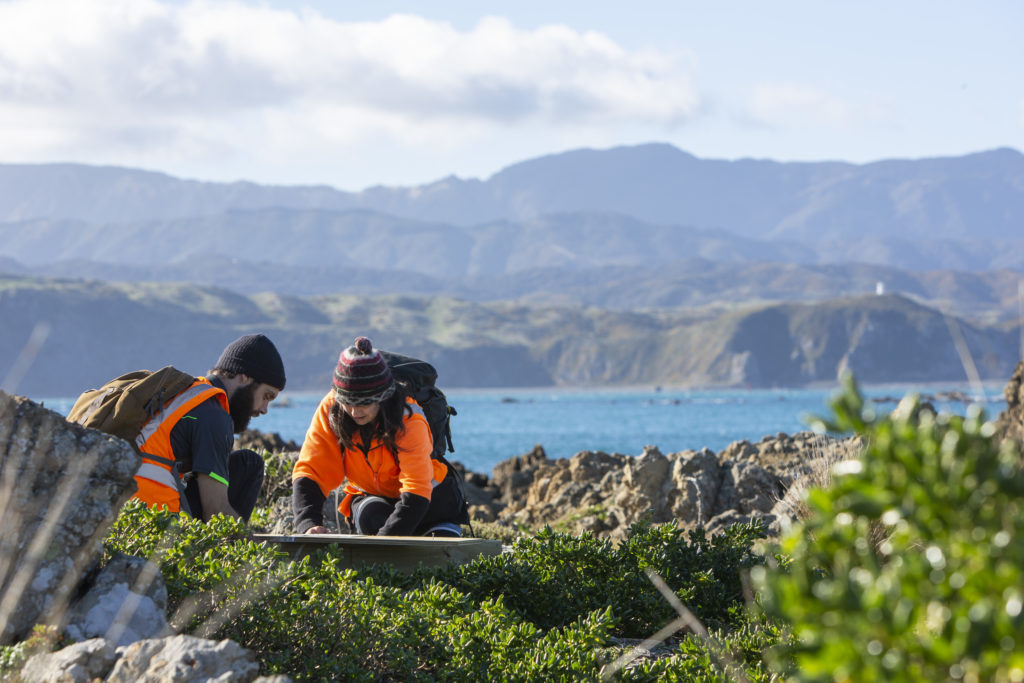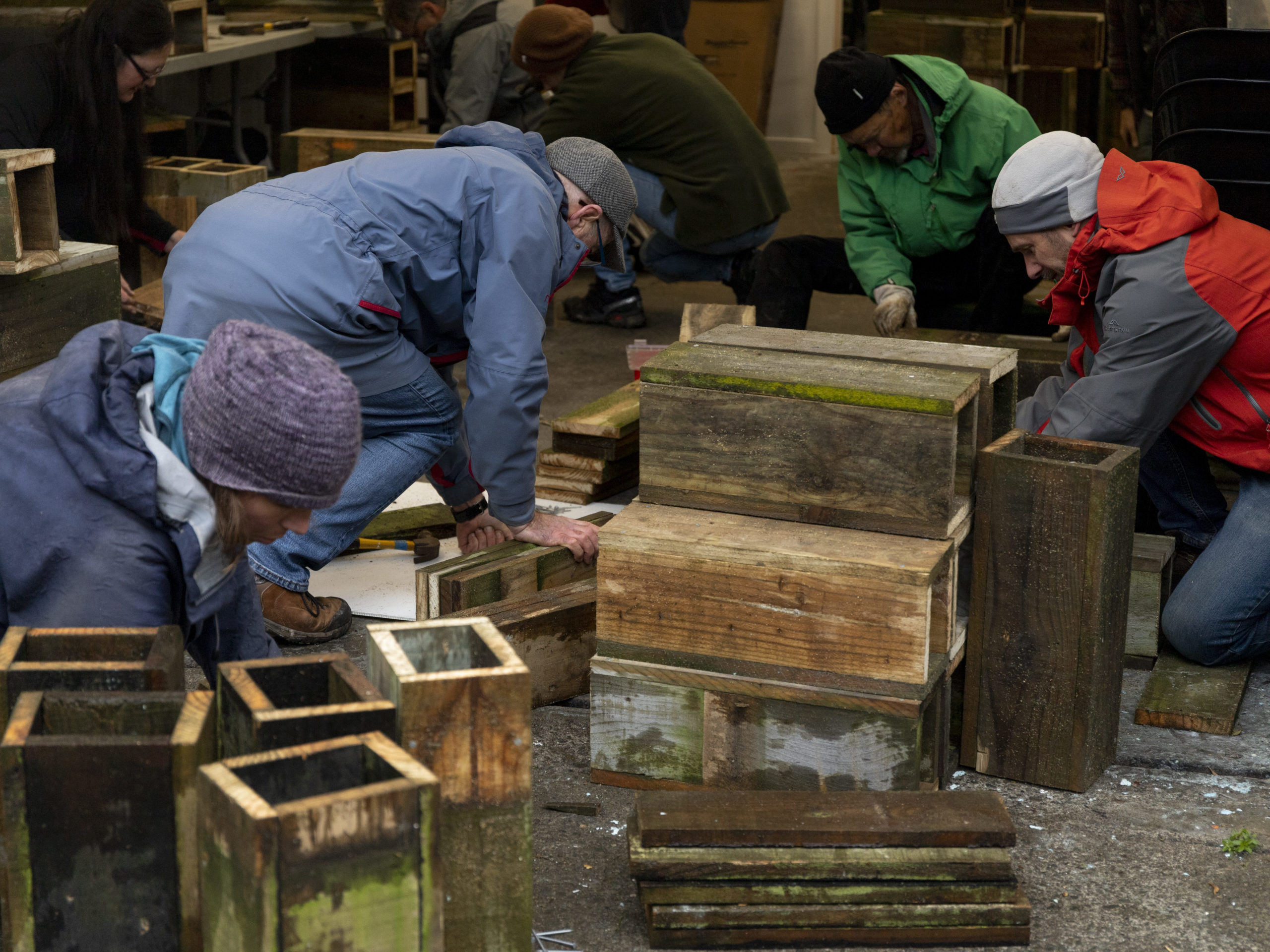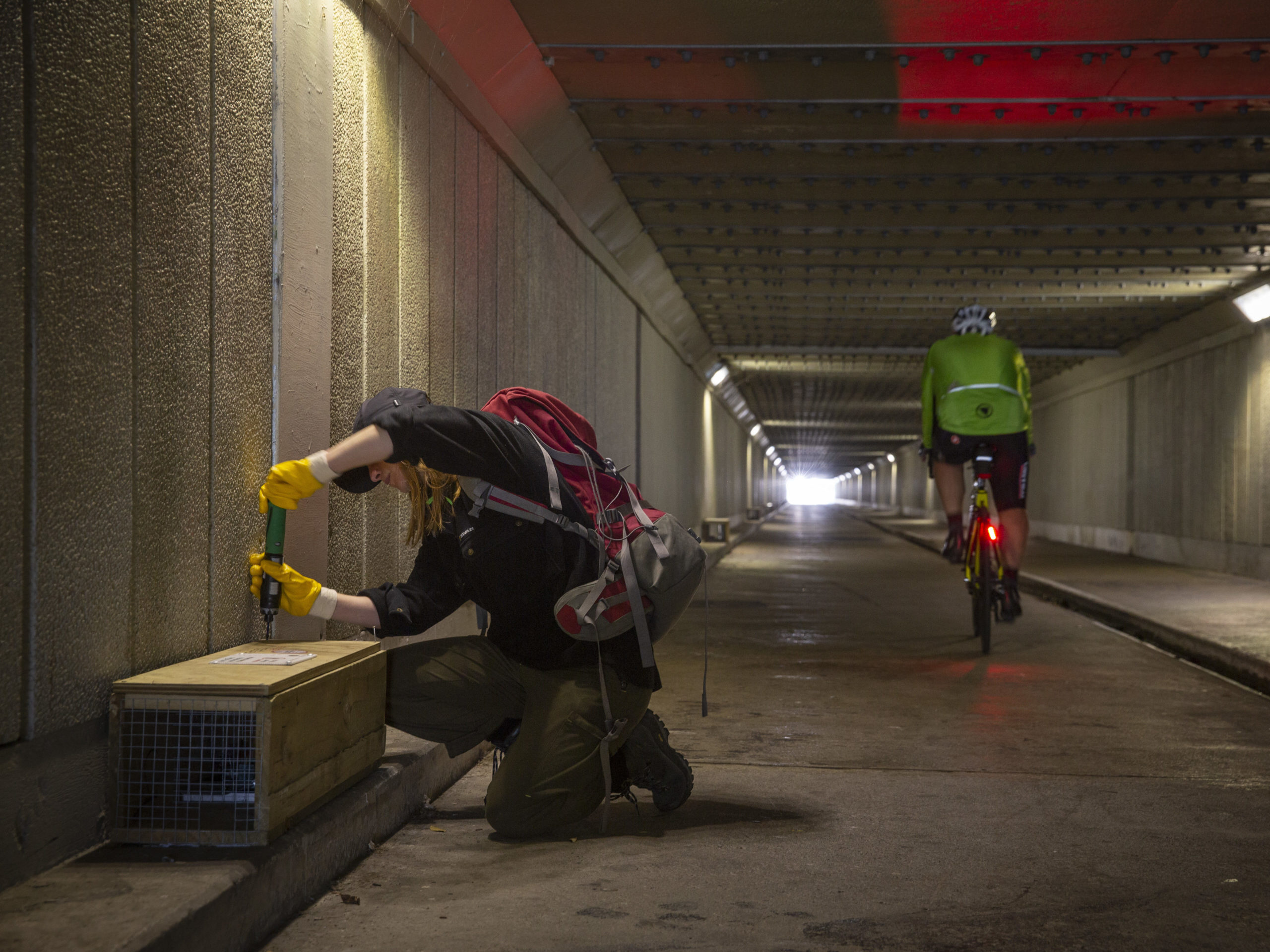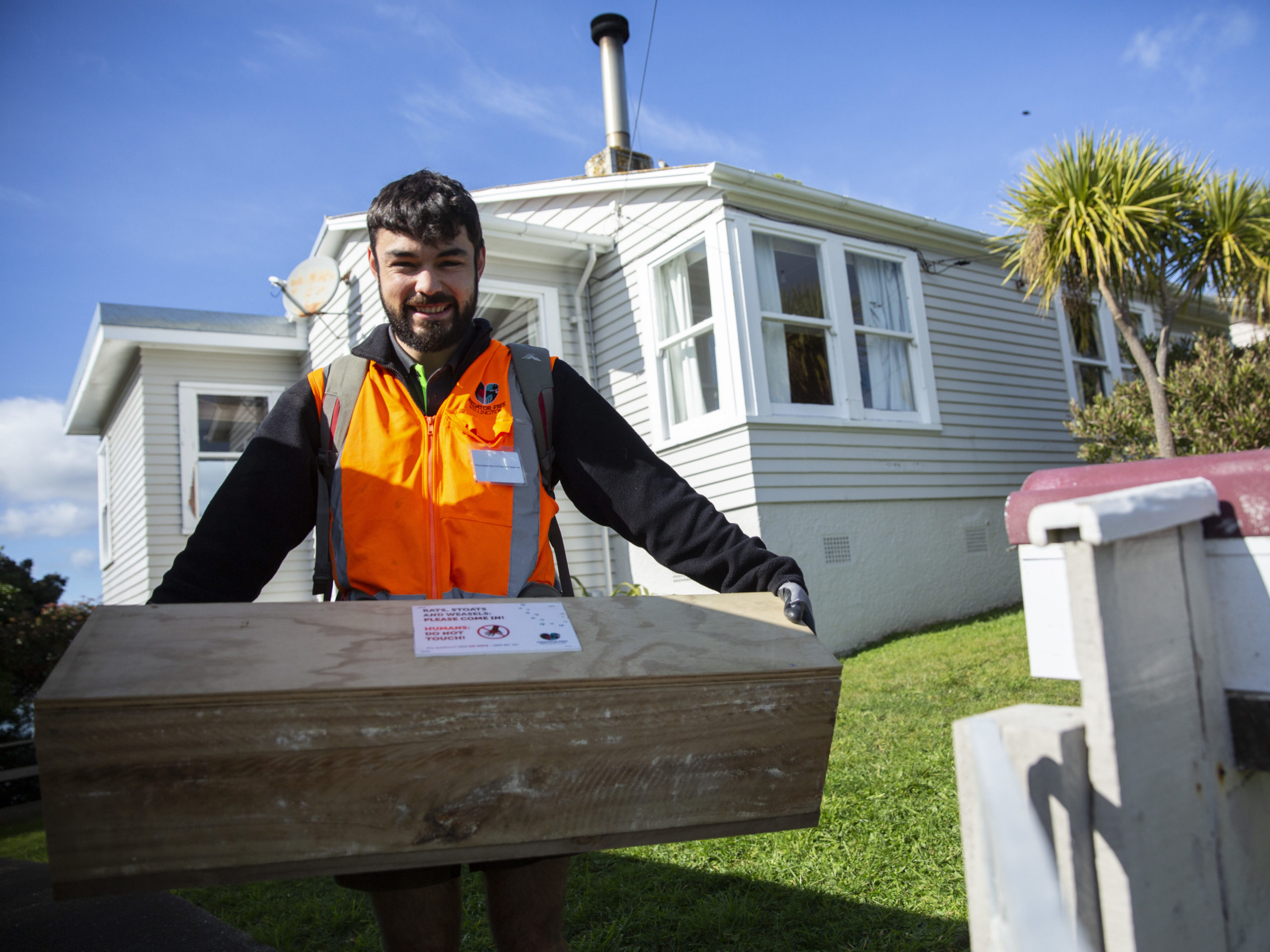Predator Free Wellington (PFW) is on a mission – they want to be the first predator free capital city in the world. And so far the project has been a huge success – the Miramar Peninsula is now free from Norway rats and weasels.

Native birds have increased by 33% since the project began, with kākā, kākāriki and kererū all flocking to the peninsula, while populations of tree wētā have doubled. But there’s one more hurdle for the team to jump – eradicating ship rats. To sink the ship rat problem, the PFW team has gotten crafty with how they trap. We caught up with PFW Project Director, James Willcocks, to learn more about boomerang bait-stations, personalised rat menus and Chew Card Tuesdays.
Keeping community at the centre

James says the key to success is community. Before PFW started laying out traps and setting up bait stations, they spent months getting to know the locals and engaging them in the project.
“The only way Predator Free Wellington is ever going to work is if we put community at the centre,” James says. “Wellingtonians need to feel like they’re part of the journey – that it belongs to them and they’re inherent in its success.”
With local volunteers, they work on thousands of properties, managing a network of 1,500 traps throughout the peninsula.
They also partner with local organisations. Zero Invasive Predators (ZIP) helps monitor introduced predators with cameras and Motolures to identify hotspots of activity. And researchers from Victoria University of Wellington Te Herenga Waka study how critters like tree wētā are responding to the project.
Free feeds and tangly terrain

When they first began working in Miramar, the PFW team thought Norway rats would be the biggest challenge. They soon realised that the ship rat is a trickier customer.
Ship rats are smaller than Norway rats and are the most common rat species in Aotearoa New Zealand. While Norway rats can climb, they prefer to keep four paws on the ground. Ship rats are competent climbers, living up trees and in rooves, which can make it difficult to lure them into traps. James describes cities as “3D landscapes,” with lots of hiding places for rodents.
The Miramar peninsula also has plenty of steep coastal cliffs covered in thick mats of cape ivy – popular havens for ship rats.
And there’s no shortage of food for the animals. As well as human waste (a half-eaten sandwich at the beach or rubbish bin full of leftovers), plants like banana passionfruit grow all over the peninsula. Having so much food everywhere is an issue. “A rat’s just not going to go into a device if it’s got a free feed next door,” James says.
Ship rats also have individual tastes – “I might like pizzas, you might like burgers, so we have to figure out what to get on the plate for a particular animal,” James says. As they get closer to eradication, the PFW team has had to start catering to an individual animal’s preferences.
Ship rat solutions

Eradicating introduced predators from a city is a world first so there’s no playbook. James says they’ve had to come up with some creative solutions to the ship rat problem.
To get baits onto cliffs and into mats of cape ivy, they invented what James calls “boomerang stations.” These are bait stations tied to the end of a rope and thrown off a cliff. To check the station, they just haul in the rope.
To fight the competition from other food sources, they use a high density of traps – to stop reinvasion, they might put a bait station every ten metres along the coast. They also make the bait super accessible, using easy access 12cm pipe for rats on the ground.
For tree-dwelling ship rats, they set traps and bait stations up in the canopy.
It’s not all smooth sailing. “There are no true experts in this space,” James says. “Some things aren’t successful, but it’s all about learning and trying to get to the next step.”
James reckons new tech will come online to help as well. In the future, genomic testing could help identify where rats are coming from and create a profile of the population.
Keeping wind in their sails
Although eradicating ship rats has been difficult, James is confident they’ll achieve their goal. To keep the community engaged even after other introduced predator numbers have dropped, PFW started Chew Card Tuesday, sending out chew cards to Wellingtonians to help them monitor for predators in their backyard.
They also put QR codes on traps. This means if a local is out for a jog or walking the dog and sees something, they can scan the code to let the team know.
Seatoun has been ship rat free for the last 12 months and is keen to stay that way. But PFW and locals need to monitor for reinvasion. In March, as the country was busy testing for COVID19, the PFW team came up with their own RATS test. They asked locals to:
Reset – backyard traps
Activity – monitor with chew cards
Tell – report what they’re seeing online
Support local – reported results went in the draw to win prizes from local businesses
And the community is seeing the benefits of their hard work.
Nature talks back
James says, “The birds, invertebrates and lizards are telling their own story. When the community sees a piwakawaka or Raukawa gecko in their backyard for the first time in 30 years, it answers any questions they might have about why they are doing this.”
As the dawn chorus comes back to the suburbs, James says they’ve “got to tautoko the efforts of the city.”
We carry the mana of thousands of people who’ve been working in this space for years. It’s awesome to see what’s happening in the city and how the DNA of what it means to be a Wellingtonian is changing.”
Why stop at Wellington? Join a local trapping group and help protect the nature in your own backyard.

